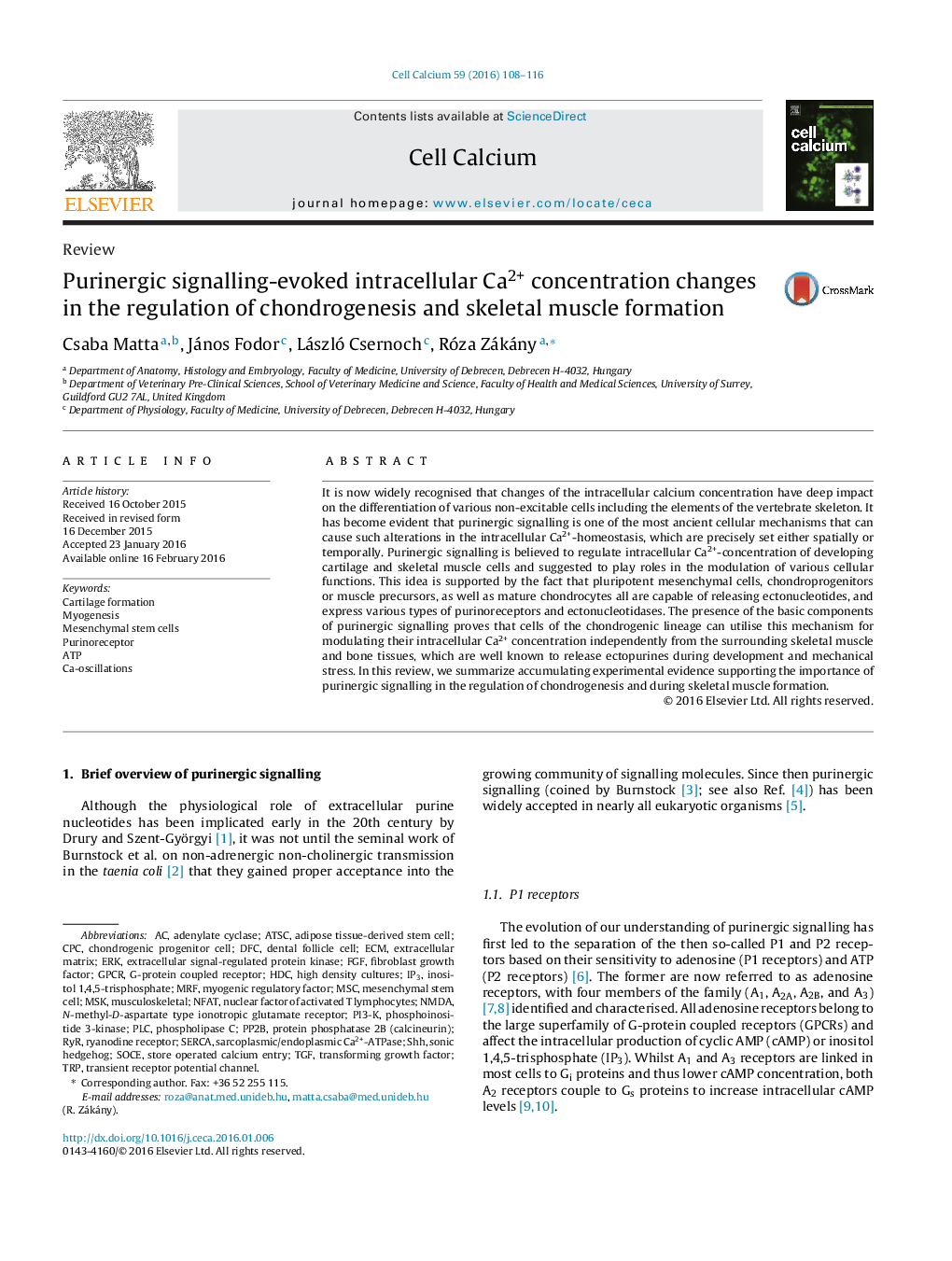| Article ID | Journal | Published Year | Pages | File Type |
|---|---|---|---|---|
| 2165858 | Cell Calcium | 2016 | 9 Pages |
•Precisely set intracellular Ca2+-concentration changes regulate chondrogenesis.•Elements of purinergic signalling are expressed in immature cartilage and muscle.•Ectopurines evoke intracellular Ca2+-events during muscle and cartilage formation.•Various functions of chondrocytes are altered by Ca2+-concentration changes.•Cell proliferation is very sensitive to properly set intracellular Ca2+-events
It is now widely recognised that changes of the intracellular calcium concentration have deep impact on the differentiation of various non-excitable cells including the elements of the vertebrate skeleton. It has become evident that purinergic signalling is one of the most ancient cellular mechanisms that can cause such alterations in the intracellular Ca2+-homeostasis, which are precisely set either spatially or temporally. Purinergic signalling is believed to regulate intracellular Ca2+-concentration of developing cartilage and skeletal muscle cells and suggested to play roles in the modulation of various cellular functions. This idea is supported by the fact that pluripotent mesenchymal cells, chondroprogenitors or muscle precursors, as well as mature chondrocytes all are capable of releasing ectonucleotides, and express various types of purinoreceptors and ectonucleotidases. The presence of the basic components of purinergic signalling proves that cells of the chondrogenic lineage can utilise this mechanism for modulating their intracellular Ca2+ concentration independently from the surrounding skeletal muscle and bone tissues, which are well known to release ectopurines during development and mechanical stress. In this review, we summarize accumulating experimental evidence supporting the importance of purinergic signalling in the regulation of chondrogenesis and during skeletal muscle formation.
Graphical abstractFigure optionsDownload full-size imageDownload as PowerPoint slide
